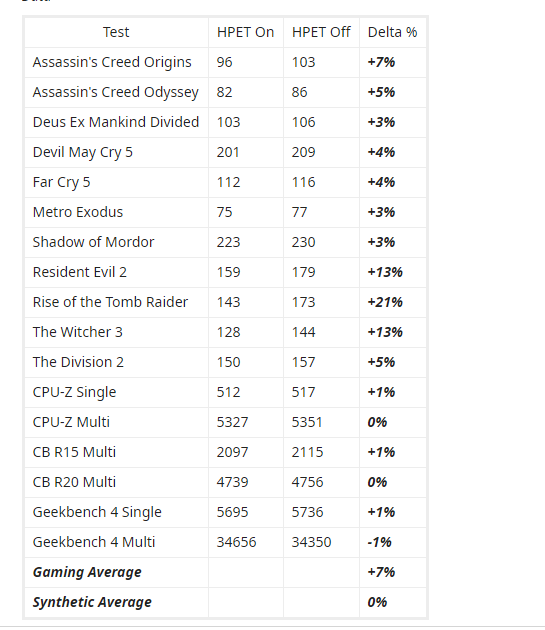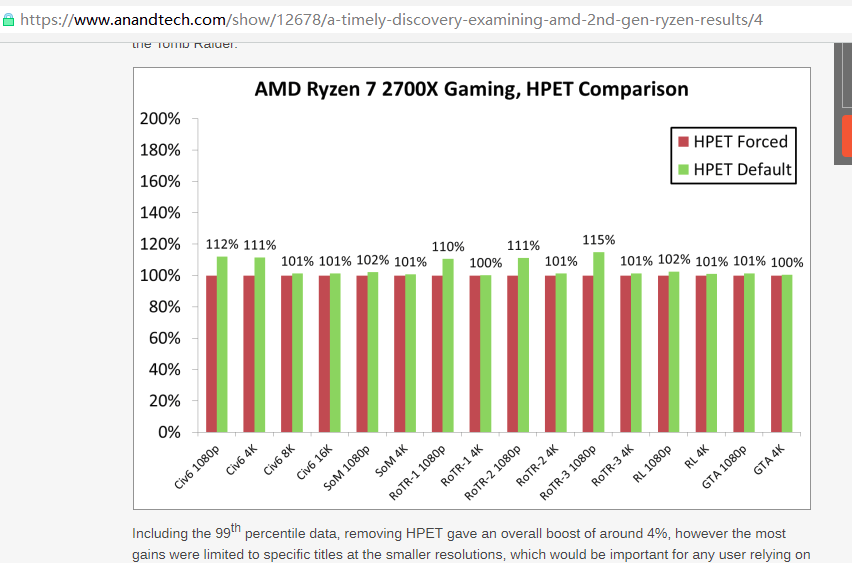本帖最后由 ft5555 于 2019-7-23 16:51 编辑
引自reddit网友的3700X测试数据

anandtech以前做过2700x的数据 也是关闭更好

点击Windows键,输入cmd,右键单击结果列表中的cmd.exe,然后选择以管理权限运行命令提示符。
要启用HPET作为唯一的计时器,请运行命令 bcdedit / set useplatformclock true
要在Windows中禁用HPET,请运行命令bcdedit / deletevalue useplatformclock
============================================================
如果安装过ryzen master 系统的HPET就会强制开启,卸载后也不会自己关掉。
======================================================
有趣 AMD官方否认了这个测试
[color=var(--newCommunityTheme-bodyText)][color=var(--newCommunityTheme-linkText)]AMD_Robert
Technical Marketing21 points·[color=var(--newCommunityTheme-metaText)]8 hours ago
You are exactly right. Disabling HPET distorts the system's understanding of time, which causes the system to miscount the frames in a second. If one second isn't one second, then FPS isn't FPS anymore. This data is invalid.
Most games use a function called QueryPerformanceCounter() call it "QPC" for short. It's a core Win32 API, and the most simple way to access the best timer available in the system. When a game is counting "frames per second," it's comparing frames rendered against the result of duration measured from QPC. Boom, that's FPS. That's not "backwards"! That's the simplest, most straightforward way to achieve the intended maths. HPET is not the only timer on the system. There are many timers, actually, and they work on a fallback basis. If a user disables a higher-resolution timer, the duration of time reported by two calls to QPC may not actually match the real elapsed time ("ticks") d/t lower timer precision. If the returned time from QPC is longer: reduced FPS. If the returned time from QPC is shorter: increased FPS. Without knowing how each game specifically reports FPS, it's impossible to determine why some games might report higher or lower effect. But the basic principle above shows one of many ways why tinkering with system timers can have deleterious effects on accurate performance reporting. This isn't the first time HPET on/off has been flagged. This allegation/discovery/claim (unsure which word to use) has been circulated for both AMD and Intel platforms over the years. It seems to reappear each time a new platform is released, and then dies off as debunking efforts progress.
| ![]() 沪公网安备 31010702007642号 )
沪公网安备 31010702007642号 )